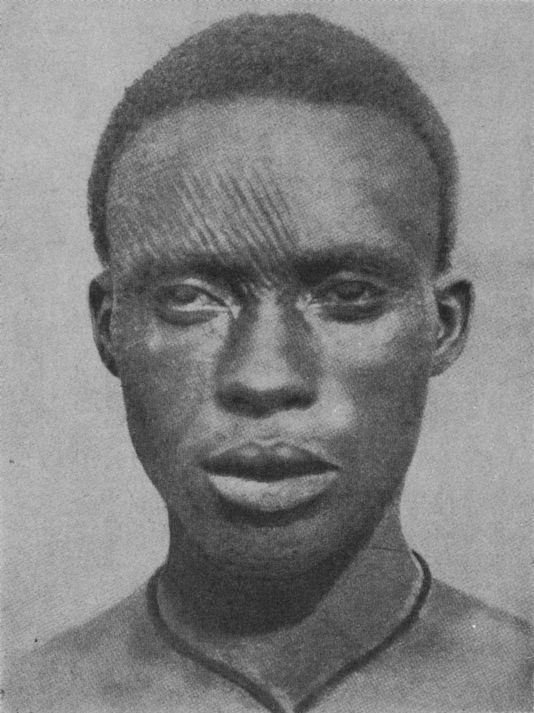Ichi (scarification) on:
[Wikipedia]
[Google]
[Amazon]
 Ichi was a form of facial ritual
Ichi was a form of facial ritual
 Ichi was a form of facial ritual
Ichi was a form of facial ritual scarification
Scarification involves scratching, etching, burning/ branding, or superficially cutting designs, pictures, or words into the skin as a permanent body modification or body art. The body modification can take roughly 6–12 months to heal. In t ...
worn by mainly men of the Igbo people
The Igbo people ( , ; also spelled Ibo" and historically also ''Iboe'', ''Ebo'', ''Eboe'',
/
/
''Eboans'', ''Heebo'';
natively ) are an ethnic group found in Nigeria, Cameroon, Gabon, and Equatorial Guinea. Their primary origin is fo ...
of Nigeria
Nigeria, officially the Federal Republic of Nigeria, is a country in West Africa. It is situated between the Sahel to the north and the Gulf of Guinea in the Atlantic Ocean to the south. It covers an area of . With Demographics of Nigeria, ...
. The scarification indicated that the wearer had passed through initial initiation into the aristocratic ''Nze na Ozo
The Nze na Ozo society, otherwise known as the Agbalanze society, is the highest and most important spiritual, Odinani, religious and social grouping in the Igbo people, Igbo society of Southeast Nigeria.
History
Initiation into the aristocratic ...
'' society, thus marking the wearer as nobility
Nobility is a social class found in many societies that have an aristocracy. It is normally appointed by and ranked immediately below royalty. Nobility has often been an estate of the realm with many exclusive functions and characteristics. T ...
. Echoes of this tradition are found in the contemporary derivative word Ichie, which denotes a member of a class of titled chieftains amongst the Igbo.
History
The scarification was found among men in the Awka-Nri areas and among a few women in the Awgwu and Nkanu areas. Its wearers were authorized to perform ritual cleansing of abominations and to confer titles on people. People with facial marks were regarded as Nri men and were less likely to be taken as slaves. Other parts of Igbo land may have started wearing Ichi as a result of this. There are two styles; the Nri style worn in the Awka-Nri areas, and the Agbaja style worn in the Awgwu and Nkanu areas. In the Nri style, the carved line ran from the center of the forehead down to the chin. A second line ran across the face, from the right cheek to the left. This was repeated to obtain a pattern meant to imitate the rays of the sun. In the Agbaja style, circles and semicircular patterns are added to the initial incisions to represent the moon. These scarifications were given to the representatives of the ''eze'' Nri; the ''mbùríchi''. The scarifications were the Nris' way of honoring the sun that they worshipped and was a form of ritual purification.Thomas, page 413—414.See also
* Yoruba tribal marksReferences
Nri-Igbo Igbo culture Noble titles Scarification {{Nobility-stub